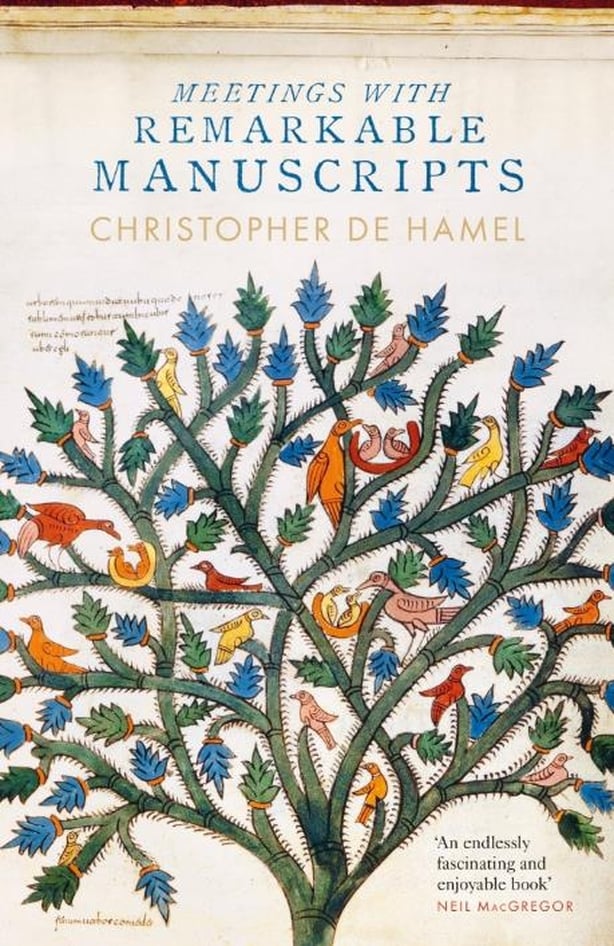Beautifully illustrated, Christopher de Hamel's 632-page work Meetings with Remarkable Manuscripts traces the history of iconic examples of such ancient art, including The Book of Kells.
Christopher de Hamel, it is believed, handled more illuminated manuscripts than any other living person during his time at Sotheby's in London. Since 2000, he has been Fellow and Librarian of Corpus Christi College, Cambridge while also finding time to assemble this capacious work which traces the history of the following mansucripts: the late sixth century Gospels of St Augustine, which are to be found at the aforementioned Corpus Christi; The Codex Amaitinus in Florence; the late eighth century The Book of Kells at Trinity College; The Leiden Aratea (in Leiden); The Morgan Beatus in New York; Hugo Pictor (Oxford); The Copenhagen Psalter (still in that city); The Carmina Burana, Munich; The Hours of Jeanne de Navarre, Paris; The Hengwrt Chaucer (Aberystwyth, Wales); The Visconti Semideus (St Petersburg); The Spinola Hours (Los Angeles).
Luxuriate here in the beauty of the pages themselves and learn in the process the stories of the scholarly disputes, the decisions and scheming of wily kings and queens a propos such manuscripts, their woners and those who have copied or indeed, lusted after the illuminated treasures therein.
"The Book of Kells has been reported stolen twice. " Thus the cautious first sentence in chapter three which deals with our best-known illuminated masterpiece, estimated by Trinity College in 1874 - the year of the second of its reported thefts - to be four times more valuable than the world's most expensive known book.
The latter was a Gutenberg Bible on vellum which had sold for £3,400 the previous year, the highest price ever paid for a book at that point.
As for its first theft, The Book of Kells was stolen in 1007 from the town which once owned it and which gave the manuscript its name. Fascinating stuff.
Paddy Kehoe

The Book of Kells, said to be the work of Irish monks from the scriptorium of the monastery on Iona between the 7th and 9th centuries AD.


